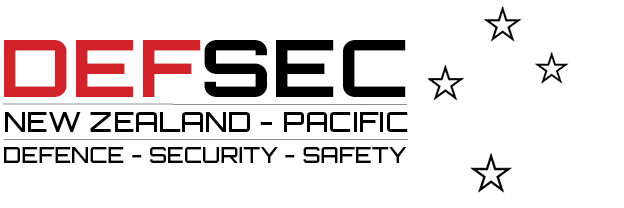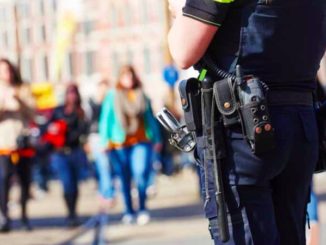
The Australian Strategic Policy Institute (ASPI) special report ‘Safety in numbers: Australia’s private security guard force and counterterrorism’ is an account of both the massive opportunities and stifling barriers facing Australia’s security industry, writes editor Nicholas Dynon, with big takeaways for New Zealand.
Australians were again the target of a lone wolf weapons attack last November when a deranged individual took to Melbourne’s Bourke Street with a gas cylinder-laden ute, a large knife, and an apparent intent to cause harm. Three members of the public were randomly stabbed, including an on-duty SECUREcorp security guard.
It all happened so fast that the hapless guard had no opportunity to defend himself against the initial blow. Had things been different and he’d had time to observe, report and react, he would have effectively been first responder. Victoria Police officers arrived at the scene minutes later.
In stadium-based terrorist attacks in Paris in 2015 and Manchester in 2017, notes the ASPI report, the interventions of security guards in denying entry to would-be bombers resulted in there being fewer fatalities that might have otherwise been the case.
On any given day private security personnel are providing security services to any number of malls, office buildings, transport hubs, government offices, defence facilities and critical infrastructure sites.
The point is, states the report, private security staff provide the ‘eyes and ears’ before any attack and an ability to be first responders after any security-related incident.” Numbering more than the combined workforce total of Australia’s police and full-time military forces, they are more likely than their defence and law enforcement colleagues to be ‘on the spot’.
Hence the report’s title: ‘Safety in numbers’; and its basic premise that Australia’s private security guard force constitutes a massive yet largely untapped resource capable of supporting that country’s counter-terrorism planning and response effort.
Security industry – big numbers
Australia’s private security industry has an estimated turnover of more than $8 billion – $4 billion in the manned sector and $4 billion in electronic security. The report estimates that there are more than 210,000 individual security license holders across Australia’s eight state and territory jurisdictions.
Although each jurisdiction defines security occupations and license classes differently, it estimates that licenses for security guards and crowd controllers number some 190,000. Given that many individuals hold multiple licenses across multiple classes, and that some hold licenses in multiple jurisdictions, ASPI estimates the total number of guard and crowd control license holders to number more than 120,000.
By comparison, states the report, “Australia has approximately 56,750 police and 58,060 permanent ADF [Australian Defence Force] personnel.”
But comparisons within the report between private security officers and their police and defence counterparts are otherwise less than glowing.
Perception problems
Hampering cooperation between law enforcement and private security in Australia is a lack of trust. According to the report, police hold security guards in generally low regard.
The report lays the blame for the sector’s perception issues on a number of factors. Governments, it says, have failed to provide consistency in licensing definitions, requirements and standards, and despite considerable efforts they’re also yet to eliminate perceptions around organised crime involvement in the industry.
But otherwise, at the root of the industry’s perception problems are the fundamental issues of low pay and a lack of training.
The base rate for a permanent full-time Level 1 security officer in Australia is AUD 21.26 per hour, and for the majority, who are Level 2 officers, the base rate is AUD 21.88.
“National security planners and police generally view the guarding sector as low-paid, entry-level employment that anyone can do with minimal training,” states the report, and because of this they appear to have a perception that private security officers “aren’t valuable.”
With pay kept low due to intense competition to win work from price-sensitive customers, there is little incentive to pay for overheads such as training. Compounding this is significant quality variation among registered training organisations, with some offering the base Certificate II qualification after a “few days” of training, and others using verbal tests for candidates unable to write in English.
In need of a shake-up?
The central recommendation made by the report’s authors is the “move to a national framework for security licensing and training, which aims higher than a lowest common denominator national or ‘floor’ minimum standard.”
Central to this framework would be a new statutory authority – a Security Industry Authority (SIA) – responsible to the Minister for Home Affairs and responsible for national licensing, enforcement of licensing compliance, training development, monitoring of standards, policy development, development and promulgation of additional counter-terrorism awareness and training information, and the integration of the private security manned sector into Australia’s counter-terrorism strategy.
Enjoying this article? Consider a subscription to the print edition of New Zealand Security Magazine.
Why this recommendation is central to the report is that it is unlikely that the range of other recommendations it makes – higher standards, targeted training, greater powers and public-private cooperation – could ever be realised under the existing regulatory framework.
Targeted training and increased powers
Noting that existing security qualifications (Certificates II and III) don’t specifically address the skills required to identify, report and respond to potential terrorist activity, the report recommends additional training.
“The Behavioural Observation and Suspicious Activity Recognition program is an example of formal training that would enhance a guard’s skill set,” it notes.
Another example mentioned is the recently released US Nationwide Suspicious Activity Reporting Initiative, “which assists private-sector security personnel to recognise suspicious behaviours associated with pre-incident terrorism activities and understand how to report suspicious activities while protecting civil liberties when documenting information.”
For selected senior security officers assisting in assisting with counter-terrorism activities, the report suggests certain additional powers could be considered. These might include the power to detain on suspicion, the power to release someone from being detained, ‘move on’ powers, and the authority to evacuate people and to cordon an area during an incident – potentially beyond the footprint of the building they are being employed to guard.
Consideration, suggests the report, should be given to making security officers ‘authorised officers’ for specific roles in the same way that they are often made ‘authorised’ officers by local councils in relation to carrying out certain compliance activities such as noise control, parking enforcement and animal management.
Public-private partnership
Within a section titled ‘Public-private cooperation’, two recommendations are made: (i) that the manned private security sector should be engaged in “relevant national and state forums that consider CT; and (ii) that law enforcement agencies should be encouraged to “liaise with the private security sector and have representatives from the sector address training courses to explain their functions and powers.”
In doing so, the report correctly points out that apart from the Protecting People in Crowded Places guidance produced last year by the Australia New Zealand Counter Terrorism Committee (ANZCTC), the private security sector doesn’t rate a mention in any publicly available national security documentation. The sector has no formal relationship with government in relation to counter terrorism planning.
Two distinct models for bringing the sector into the fold at city and local levels are the (i) ANZCTC framework’s ‘crowded places forums’, and (ii) more progressive models such as the UK’s Project Griffin and New York’s Shield program. Versions of both of these models are progressing in various states – and delivering positive results.
But, importantly, the sector has no seat at the central (federal) government table. In what is perhaps the most damning illustration of the regard in which the sector is held by government, the Industry Consultation on National Security, a CEO-level consultative body chaired by the Attorney General, includes does not include a representative from the private security sector.
The report rightly concludes that having the private security sector contribute to Australia’s counter terror effort will require a massive shake-up, but it’s a shake-up that will be to the benefit not only of the industry but also to Australia’s national security.





